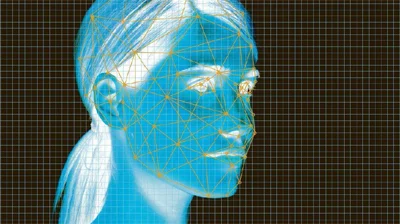Years ago, spies, moles and secret agents using facial recognition glasses were only scenes in sci-fi films.
Recently, it became reality when Chinese policemen started using them for surveillance, leading to a number of arrests including for kidnapping, hit-and-run as well as fake identification cases.
The dark sunglasses, which are connected to a central database containing particulars of criminal records, are able to instantaneously bring up personal details when photos are captured.
Although facial recognition has existed for decades, it is only recently that it has reached an astounding level of maturity, adopting Artificial Intelligence (AI)’s deep learning technique.
Like any other technology powered by AI, it has the potential to reduce manpower, increase speed and enhance effectiveness of related operations.
Further, there is no escape from the technology as it can even identify masked individuals, as minimal facial data points are sufficient for recognition.
However, the downside of facial data compared to other biometric data, such as fingerprints, is that the photos are easily obtained without our knowledge or consent.
Typically, facial recognition technology is used for surveillance to combat attacks as well as in creating convenience for good customer experience.
Recently, more users are exploring innovative applications such as the new Facebook function where users are alerted when their untagged photos are uploaded, assisting them to manage their identity, including fraud control. In India, the technology is being used to curb the epidemic of “lost children”, who are typically sold into slavery, by matching photos of missing children to real children who are alone on the streets.
The global leader of this cutting-edge technology is China, practising it extensively in every part of the country and rapidly becoming a norm in citizens’ daily lives.
China’s unclear regulations, in addition to a large pool of driven technology makers and high citizen acceptance, allow flexibility for facial recognition technology to be adopted in various fields, including financial services, retail, public security and transportation.
Airbnb check-ins using facial “smart locks” and addressing problems of jaywalking to improve road safety, are among the myriad applications China is continuously exploring.
Development of facial recognition technology in the Asean region is limited and largely applied in security-related areas, such as to tighten border checks in the Philippines and Thailand as well as to identify inmates attending programmes in Indonesian prisons. Indonesia has applied the technology to manage fake news.
Other applications include curbing voter identity fraud in Cambodia and identifying genuine squatters as part of a resettlement plan in Myanmar.
Singapore, meanwhile, has installed the technology to fight crime, in the hotel industry for check-ins as well as enhancing customer experience in banks.
In Malaysia, low-cost airline AirAsia recently announced that a new system using facial recognition technology called the Fast Airport Clearance Experience System (FACES), which will be piloted at Senai Airport, will enhance travelling experience with faster security and screening processes.
Malaysia is also involved in the “Our Eyes” joint-initiative with Indonesia, Singapore, Philippines, Brunei and Thailand. Although facial technology brings many benefits, it has also brought up some legitimate concerns.
First, it could lead to privacy issues. Advanced facial recognition technology is not only able to identity faces but also read facial expressions, including feelings, and, some say even sexual preferences.
The lack of digital consent does not only invade one’s privacy but could also be dangerous, for instance, when involving sexual preferences that are illegal in certain countries.
In northwestern China, the minority Uighur community is under extreme surveillance as the authorities track their every move.
Second, it could lead to harassment. An example of misuse involves an app called FindFace, where it can analyse photos and match it to the individuals’ social media accounts. Finding lost friends and family members as well as getting in touch with love interests can turn sour when trolls start using the application to expose identities with malicious intent.
Third, it is not absolutely accurate. Apple Face ID, for instance, received many complaints as an ineffective security measure when it failed to distinguish between Asian users and family members with similar faces.
Further, hackers claimed to have fooled the system by combining 3D printing with makeup and 2D images, only a week after Apple X was released. As facial recognition technology grows more sophisticated and advanced, Malaysians might see more of its applications in our daily lives.
However, it is crucial to steer technology development in the right direction, managing the concerns that come with it. As the world becomes more connected, privacy becomes an ultimate luxury.
Will we manage to find the balance of our privacy needs in theory and the reality of losing them in practice?
Perhaps, the next time someone talks about losing privacy, we should be ready to negotiate, “How much?”





